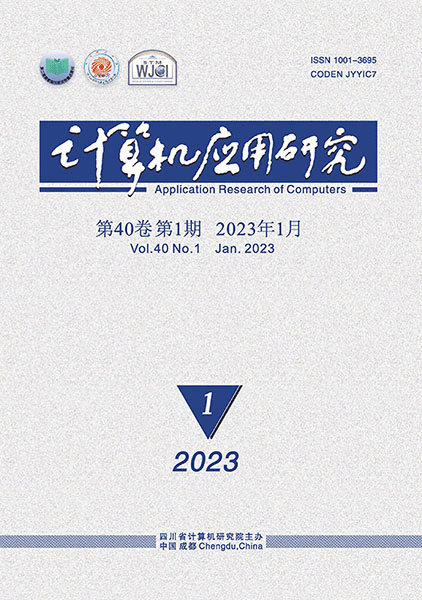EnGAN:医学图像分割中的增强生成对抗网络
EnGAN: enhancement generative adversarial network in medical image segmentation
电子科技大学 网络与数据安全重点实验室, 成都 610054

摘要
原始采集的医学图像普遍存在对比度不足、细节模糊以及噪声干扰等质量问题,使得现有医学图像分割技术的精度很难达到新的突破。针对医学图像数据增强技术进行研究,在不明显改变图像外观的前提下,通过添加特定的像素补偿和进行细微的图像调整来改善原始图像质量问题,从而提高图像分割准确率。首先,设计引入了一个新的优化器模块,以产生一个连续分布的空间作为迁移的目标域,该优化器模块接受数据集的标签作为输入,并将离散的标签数据映射到连续分布的医学图像中;其次,提出了一个基于对抗生成网络的EnGAN模型,并将优化器模块产生的迁移目标域用来指导对抗网络的目标生成,从而将改善的医学图像质量知识植入模型中实现图像增强。基于COVID-19数据集,实验中使用U-Net、U-Net+ResNet34、U-Net+Attn Res U-Net等卷积神经网络作为骨干网络,Dice系数和交并比分别达到了73.5%和69.3%、75.1%和70.5%,以及75.2%和70.3%。实验的结果表明,提出的医学图像质量增强技术在最大限度保留原始特征的条件下,有效地提高了分割的准确率,为后续的医学图像处理研究提供了一个更为稳健和高效的解决方案。
基金项目
国家自然科学基金资助项目(62372083,62072074,62076054,62027827,62002047)
四川省科技支持计划资助项目(2024NSFTD0005,2022JDJQ0039)
电子科技大学医工结合基金资助项目(ZYGX2021YGLH212,ZYGX2022YGRH012)
出版信息
DOI: 10.19734/j.issn.1001-3695.2023.08.0509
出版期卷: 《计算机应用研究》 印刷出版, 2024年第41卷 第7期
所属栏目: 图形图像技术
出版页码: 2195-2202
文章编号: 1001-3695(2024)07-039-2195-08
发布历史
[2024-01-02] 优先出版
[2024-07-05] 印刷出版
引用本文
邓尔强, 秦臻, 朱国淞. EnGAN:医学图像分割中的增强生成对抗网络 [J]. 计算机应用研究, 2024, 41 (7): 2195-2202. (Deng Erqiang, Qin Zhen, Zhu Guosong. EnGAN: enhancement generative adversarial network in medical image segmentation [J]. Application Research of Computers, 2024, 41 (7): 2195-2202. )
关于期刊

- 计算机应用研究 月刊
- Application Research of Computers
-
刊号
ISSN 1001-3695
CN 51-1196/TP
《计算机应用研究》创刊于1984年,是由四川省科技厅所属四川省计算机研究院主办的计算技术类学术刊物。
《计算机应用研究》瞄准本学科领域迫切需要的前沿技术,及时反映国内外计算机应用研究的主流技术、热点技术及最新发展趋势。主要刊载内容包括本学科领域高水平的学术论文、本学科最新科研成果和重大应用成果。栏目内容涉及计算机学科新理论、计算机基础理论、算法理论研究、算法设计与分析、区块链技术、系统软件与软件工程技术、模式识别与人工智能、体系结构、先进计算、并行处理、数据库技术、计算机网络与通信技术、信息安全技术、计算机图像图形学及其最新热点应用技术。
《计算机应用研究》拥有众多高层次读者、作者,读者对象主要为从事计算机学科领域高、中级研究人员及工程技术人员,各高等院校计算机专业及相关专业的师生。多年来《计算机应用研究》的总被引频次及Web下载率一直名列本学科同类学术刊物前茅,所刊发的学术论文以其新颖性、学术性、前瞻性、导向性、实用性而备受广大读者的喜爱。
收录和评价
- 第二届国家期刊奖百种重点期刊
- 中国期刊方阵双效期刊
- 全国中文核心期刊(北大2023年版)
- 中国科技核心期刊
- 中国科学引文数据库(CSCD)来源期刊
- RCCSE中国核心学术期刊
- 中国计算机学会会刊
- 2020—2022年科技期刊世界影响力指数(WJCI)报告收录期刊
- 中国科技期刊精品数据库全文来源期刊
- 中国学术期刊综合评价数据库来源期刊
- 《中国期刊网》《中国学术期刊(光盘版)》来源期刊
- 2017—2019年中国国际影响力优秀学术期刊(自然科学与工程技术)
- 中国精品科技期刊顶尖学术论文(F5000)项目来源期刊
- 《中国工程技术电子信息网》《电子科技文献数据库》来源期刊
- 英国《科学文摘》(INSPEC)来源期刊
- 《日本科学技术振兴机构数据库》(JST)来源期刊
- 俄罗斯《文摘杂志》(AJ, VINITI)来源期刊
- 美国《艾博思科学术数据库》(EBSCO)全文来源期刊
- 美国《剑桥科学文摘(自然科学)》(CSA(NS))核心期刊
- 波兰《哥白尼索引》(IC)来源期刊
- 美国《乌利希期刊指南(网络版)》(Ulrichsweb)收录期刊





